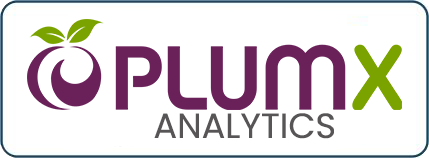Amberlyst™-15 Catalyzed Hydrolysis of Mango Peel Waste for Bioethanol Production: HPLC Glucose Quantification and GC-FID Analysis of Ethanol Pre- and Post-Distillation
DOI:
https://doi.org/10.33102/mjosht.430Keywords:
Mango peel;, Bioethanol, Amberlyst-15, Glucose, HydrolysisAbstract
Mango peel waste appears to be an alternative source to lignocellulose materials to produce bioethanol. According to various studies, mango peels are rich in carbohydrates and sugar, which are suitable for generating bioethanol. Today, gasoline, a non-renewable fuel, is massively utilized as a transport fuel. Accordingly, a large amount of bioethanol will have to be generated to replace gasoline. The objectives of this research are to produce bioethanol from mango peel using Amberlyst-15 at various concentrations, characterize the bioethanol, and compare its concentration before and after distillation. For the first time, Amberlyst-15 has been explored as a potential catalyst for hydrolyzing carbohydrates in mango peel to monomeric sugar before the fermentation process. One crucial parameter, which was catalyst concentration (2–4%, w/v), was studied for process optimization. In particular, optimum glucose yield of 23.03 ± 3.64% (High Performance Liquid Chromatography (HPLC)) and 24.64 ± 0% (Blood Glucose Meter (BGM)) was attained based on the following optimum condition: catalyst concentration of 4% (w/v). Meanwhile, the bioethanol was not detected by Gas Chromatography Flame Ionization Detector (GC-FID) after fermentation. However, after distillation, the fermented sample yielded a bioethanol concentration of 4.152 g/L. Overall, the strategy of combining heterogeneous-catalytic hydrolysis and fermentation with Saccharomyces cerevisiae has been a good strategy for producing bioethanol from mango peel biomass.
Downloads
References
El Bilali, H.; Ben Hassen, T. Food Waste in the Countries of the Gulf Cooperation Council: A Systematic Review. Foods 2020, 9, 463. https://doi.org/10.3390/foods9040463
Lee, A., Lan, J. C.-W., Anet Režek Jambrak, Chang, J.-S., Lim, J. W., & Khoo, K. S. (2024). Upcycling fruit waste into microalgae biotechnology: Perspective views and way forward. Food Chemistry Molecular Sciences, 8, 100203–100203. https://doi.org/10.1016/j.fochms.2024.100203
Thiviya, P., Gamage, A., Ranganathan Kapilan, Othmane Merah, & Madhujith, T. (2022). Single Cell Protein Production Using Different Fruit Waste: A Review. Separations, 9(7), 178–178. https://doi.org/10.3390/separations9070178
Ntaikou, I., Antonopoulou, G., & Lyberatos, G. (2020). Sustainable Second-Generation Bioethanol Production from Enzymatically Hydrolyzed Domestic Food Waste Using Pichia anomala as Biocatalyst. Sustainability, 13(1), 259. https://doi.org/10.3390/su13010259
Fruit: world production by type 2022 | Statista. (2022). Statista; Statista. https://www.statista.com/statistics/264001/worldwide-production-of-fruit-by-variety/
García-Mahecha, M., Soto-Valdez, H., Carvajal-Millan, E., Madera-Santana, T. J., Lomelí-Ramírez, M. G., & Colín-Chávez, C. (2023). Bioactive compounds in extracts from the agro-industrial waste of mango. Molecules, 28(1), 458.
Bedassa Miressa, S. (2019). Production of Bioethanol from Mango Peel Wastein Small Scale (Lab.). International Journal of Applied Science and Research, 107.
Bala, A., Mshelia, R. B., Muhammad, J. Y., Adam, M. (2022). Production and determination of properties of ethanol from mango and orange peels. International Journal of Energy Studies, 7(2), 83-97. https://doi.org/10.58559/ijes.1147674
Garraway, R. (2023). The production of bioethanol from mango (Mangifera indica) peel and plantain (Musa paradisiaca) peel via water pretreatment, dilute acid hydrolysis and fermentation supported by Saccharomyces cerevisiae. 2023(4), 2325–4076.
Rimkus, A., Saugirdas Pukalskas, Gabrielius Mejeras, & Saulius Nagurnas. (2024). Impact of Bioethanol Concentration in Gasoline on SI Engine Sustainability. Sustainability, 16(6), 2397–2397. https://doi.org/10.3390/su16062397
Setiyawan, A., Fathan, M. H., Bahatmaka, A., Fitriana, D. F., Kriswanto, K., & Naryanto, R. F. (2024). Characterization of bioethanol from fermented oryza sativa glutinosa as an alternative renewable fuel and blended with gasoline fuel. BIS Energy and Engineering, 1, V124034. https://doi.org/10.31603/biseeng.71
Iodice, P., Amoresano, A., & Langella, G. (2021). A review on the effects of ethanol/gasoline fuel blends on NOX emissions in spark-ignition engines. Biofuel Research Journal, 8(4), 1465–1480. https://doi.org/10.18331/BRJ20 21.8.4.2
Mustafa, A. H., Rashid, S. S., Rahim, A., Roslan, R., Musa, M., Sikder, B. H., & Sasi, A. A. (2022). Enzymatic Pretreatment of Lignocellulosic Biomass: An Overview. Journal of Chemical Engineering and Industrial Biotechnology, 8(1), 1–7. https://doi.org/10.15282/jceib.v8i1.7030
Atatoprak, T., Amorim, M. M., Ribeiro, T., Pintado, M., & Madureira, A. R. (2022). Grape stalk valorization for fermentation purposes. Food Chemistry: Molecular Sciences, 4, 100067. https://doi.org/10.1016/j.fochms.2021.100067
Schweinberger, C. M., Trierweiler, J. O., & Trierweiler, L. F. (2019). A SIMPLE EQUATION FOR TOTAL REDUCING SUGARS (TRS) ESTIMATION ON SWEET POTATO AND ETHANOL YIELD POTENTIAL. Brazilian Journal of Chemical Engineering, 36(1), 33–41. https://doi.org/10.1590/0104-6632.20190361s20170404
Mandari, V., & Devarai, S. K. (2022). Biodiesel Production Using Homogeneous, Heterogeneous, and Enzyme Catalysts via Transesterification and Esterification Reactions: a Critical Review. Bioenergy Research, 15(2), 935–961. https://doi.org/10.1007/s12155-021-10333-w
Tan, I. S., Lam, M. K., & Lee, T. (2013). Hydrolysis of macroalgae using heterogeneous catalyst for bioethanol production. Carbohydrate Polymers, 94, 561–566. https://doi.org/10.1016/j.carbpol.2013.01.042
Huang, Y. B., & Fu, Y. (2013). Hydrolysis of cellulose to glucose by solid acid catalysts. Green Chemistry, 15(5), 1095–1111. https://doi.org/10.1039/c3gc40136g
Zhang, Y., Chen, Z., Du, K., Bi, Y., Su, J., Zhang, Y., Shen, Y., & Zhang, S. (2023). Functional natural wood-plastic composites: A review of antimicrobial properties and their influencing factors. Industrial Crops and Products, 201, 116705–116705. https://doi.org/10.1016/j.indcrop.2023.116705
Datta, R. (2024). Enzymatic degradation of cellulose in soil: A review. Heliyon, 10(1), e24022. https://doi.org/10.1016/j.heliyon.2024.e24022
Adewumi, C. N., Ekpo, E. I., Ozioma Achugasim, Ogali, R. E., & Onyewuchi Akaranta. (2022). Substrate concentration: A more serious consideration than the amount of 5-hydroxymethylfurfural in acid-catalyzed hydrolysis during bioethanol production from starch biomass. Heliyon, 8(12), e12047–e12047. https://doi.org/10.1016/j.heliyon.2022.e12047
Torpong Kreetachat, Nopparat Suriyachai, Punjarat Khongchamnan, Kowit Suwannahong, Surachai Wongcharee, Chainarong Sakulthaew, Chanat Chokejaroenrat, & Saksit Imman. (2025). Optimization of Acid-Catalyzed Hydrolysis and Simultaneous Saccharification and Fermentation for Enhanced Ethanol Production from Sweet Stalk Sorghum. Catalysts, 15(4), 379–379. https://doi.org/10.3390/catal15040379
Kuznetsov, B. N., Garyntseva, N. V., Sudakova, I. G., Skripnikov, A. M., & Pestunov, A. V. (2022). Heterogeneous Catalytic Fractionation of Birch-Wood Biomass into a Microcrystalline Cellulose, Xylose and Enterosorbents. Russian Journal of Bioorganic Chemistry, 48(7), 1476–1485. https://doi.org/10.1134/s1068162022070160
Pal, R. (2015). Amberlyst-15 in Organic Synthesis Amberlyst-15 in organic synthesis. Archive for Organic Chemistry), 2012(July 2012), 570–609
Sergi Maicas, & Mateo, J. J. (2023). The Life of Saccharomyces and Non-Saccharomyces Yeasts in Drinking Wine. Microorganisms, 11(5), 1178–1178. https://doi.org/10.3390/microorganisms11051178
Topaloğlu, A., Esen, Ö., Turanlı-Yıldız, B., Arslan, M., & Çakar, Z. P. (2023). From Saccharomyces cerevisiae to ethanol: unlocking the power of evolutionary engineering in metabolic engineering applications. Journal of Fungi, 9(10), 984. https://doi.org/10.3390/jof9100984
Vitolo, M. (2021). OVERVIEW ON INVERTASE. World Journal of Pharmacy and Pharmaceutical Sciences, 10(10), 49. https://doi.org/10.20959/wjpps202110-20214
Haryuni, N., Hasanah, N., Harliana, H., & Sikone, H. Y. (2025). Interaction effect of inoculum type and dosage in the fermentation process on the quality of soy milk waste (SMW) for animal feed. Jurnal Ilmu Peternakan Terapan, 8(2), 67-73. https://doi.org/10.25047/jipt.v8i2.5811
Sokan-Adeaga, A. A., REE Ana, G., Olorunnisola, A. O., Sokan-Adeaga, M. A., Roy, H., Reza, M. S., & Islam, M. S. (2024). Ethanol production from cassava peels using Saccharomyces cerevisiae via ethanologenic fermentation process. Arab Gulf Journal of Scientific Research, 42(4), 1664-1684.
Badaoui, O., Hanini, S., Djebli, A., Haddad, B., & Benhamou, A. (2019). Experimental and modelling study of tomato pomace waste drying in a new solar greenhouse: Evaluation of new drying models. Renewable Energy, 133, 144–155. https://doi.org/10.1016/j.renene.2018.10.020
Vasić, K., Knez, Ž., & Leitgeb, M. (2021). Bioethanol Production by Enzymatic Hydrolysis from Different Lignocellulosic Sources. Molecules, 26(3), 753. https://doi.org/10.3390/molecules26030753
Lamuru, A. S., Mahirullah, & Sri Juita. (2023). Pengaruh Ukuran Partikel Serbuk Kalsium Oksida (CaO) Sebagai Adsorben Untuk Meningkatkan Kadar Etanol Teknis: Pengaruh Ukuran Partikel Serbuk Kalsium Oksida (CaO) Sebagai Adsorben Untuk Meningkatkan Kadar Etanol Teknis. Jurnal Jejaring Matematika Dan Sains, 5(1), 1–5. https://doi.org/10.36873/jjms.2023.v5.i1.801
Lee, S. (2025). 95% Confidence Intervals: 10 Facts for Better Data Insights. Numberanalytics.com. https://www.numberanalytics.com/blog/95-confidence-intervals-facts#:~:text=The%20use%20of%20confidence%20intervals,reliability%20of%20their%20sample%20estimates.
Pullano, S. A., Greco, M., Bianco, M. G., Foti, D., Brunetti, A., & Fiorillo, A. S. (2022). Glucose biosensors in clinical practice: principles, limits and perspectives of currently used devices. Theranostics, 12(2), 493–511. https://doi.org/10.7150/thno.64035
Akyüz, E., Başkan, K. S., Tütem, E., & Apak, R. (2021). High performance liquid chromatographic method with post-column detection for quantification of reducing sugars in foods. Journal of Chromatography A, 1660, 462664. https://doi.org/10.1016/j.chroma.2021.462664
Bishnoi, C., Sharma, R. K., Godara, A. K., Sharma, V. K., & Kundu, S. S. (2015). Effect of storage temperature and duration on sugar content and sensory acceptability of strawberry pulp. Journal of Applied and Natural Science, 7(2), 745–749. https://doi.org/10.31018/jans.v7i2.677
Tulashie, S. K., Akpari, E. E. A., Appiah, G., Adongo, A., & Andoh, E. K. (2021). Acid hydrolysis of sawdust waste into bioethanol. Biomass Conversion and Biorefinery, 13(7), 5743–5756. https://doi.org/10.1007/s13399-021-01725-1
Horita, M., & Kiyoshi, T. (2022). Bioethanol Production from Various Plant Materials via Solid-state Fermentation. Japan Agricultural Research Quarterly: JARQ, 56(4), 405-412.
Pollon, M., Vitaggio, C., Ghinolfi, F., Amato, F., Cinquanta, L., & Corona, O. (2025). An automatic fermentation nutrition system compared to a traditional one: fermentation performances and composition of white wines. OENO One, 59(1). https://doi.org/10.20870/oeno-one.2025.59.1.7750
Rusli, H. (2005). Determination_of_NH4_in_Environmental_Water_with_I.pdf
Broda, M., Yelle, D. J., & Serwańska, K. (2022). Bioethanol Production from Lignocellulosic Biomass—Challenges and Solutions. Molecules, 27(24), 8717. https://doi.org/10.3390/molecules27248717
Somda, M. K., Savadogo, A., Ouattara, C. A. T., Ouattara, A. S., & Traore, A. S. (2011). Thermotolerant and alcohol-tolerant yeasts targeted to optimize hydrolyzation from mango peel for high bioethanol production. Asian J Biotechnol, 3(1), 77-83.
Ma, X., Zhao, Y., Lü, J., Jia, Y., Ma, Y., Zheng, X., Nan, W., Chen, Q., Lü, X., & Wang, X. (2024). Enhanced subcritical water pretreatment by water-ethanol system for bioethanol production from corn straw. Industrial Crops and Products, 210, 118165. https://doi.org/10.1016/j.indcrop.2024.118165
Flores, K., Neal, S., Nguyen, J. J., Capper, K., & Felder, M. (2018). Sugar Rush: How Fermentation Rate Increases with Glucose Concentration. Journal of Undergraduate Biology Laboratory Investigations.
Rekha, B., & Saravanathamizhan, R. (2021). Catalytic conversion of corncob biomass into bioethanol. International Journal of Energy Research, 45(3), 4508-4518.
Brazdausks, P., Godina, D., & Puke, M. (2023). Phosphorus-Containing Catalyst Impact on Furfural and Glucose Production during Consecutive Hydrothermal Pretreatment and Enzymatic Hydrolysis. Fermentation, 9(9), 803.
Knutsen, H. K., Alexander, J., Barregård, L., Bignami, M., Brüschweiler, B., Ceccatelli, S., Cottrill, B., Dinovi, M., Edler, L., Grasl-Kraupp, B., Hogstrand, C., Hoogenboom, L., Nebbia, C. S., Oswald, I. P., Petersen, A., Rose, M., Roudot, A. C., Schwerdtle, T., Vleminckx, C., … Wallace, H. (2017). Risks for public health related to the presence of furan and methylfurans in food. EFSA Journal, 15(10). https://doi.org/10.2903/j.efsa.2017.5005
Andary, J., Maalouly, J., Ouaini, R., Chebib, H., Rutledge, D. N., & Ouaini, N. (2021), “Stability study of furans, glucose and xylose under overliming conditions: Effect of sugar degradation products,” Bioresource Technology Reports.
Downloads
Published
Issue
Section
License
Copyright (c) 2025 Nur Sahira Adila Che Marzuki, Mohd Hafiz Abu Hassan, Susi Nurul Khalifah

This work is licensed under a Creative Commons Attribution 4.0 International License.
The copyright of this article will be vested to author(s) and granted the journal right of first publication with the work simultaneously licensed under the Creative Commons Attribution 4.0 International (CC BY 4.0) license, unless otherwise stated.














